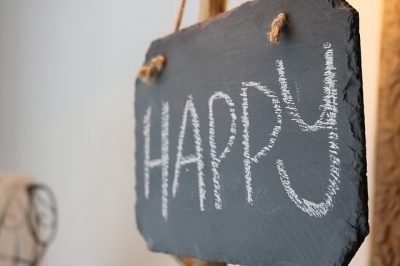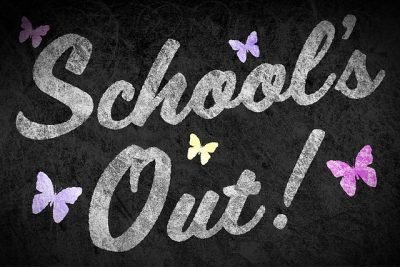Some of us got to witness the transition of dust-smeared chalkboards to sterile, glossy whiteboards during our school lives – others are only familiar with the former outside hipster-themed cafes and in bars and restaurants.

Either way, the concept of a writing board, be it in the classroom, conference room or your kitchen wall, has endured long enough to show that it’s on to something. Teachers often cite that teaching while writing helps pace them to keep from going too fast or too slow to test students’ attention spans, while calling students up to the board encourages participation and interactivity, the first-hand experience of which expedites the learning process.
This is often also the modus operandi for chalk- or whiteboards used to study, since manually listing information out and illustrating the material with diagrams, drawings, charts and the like have been known to help with information retention – popularizing the concept of dry erase paint for walls in schools, homes and work-spaces too.
Aside from functionality, these boards often serve to enhance aesthetics. A cute little chalkboard clipped to our fridge can double not just as a conveniently placed, visible place to jot down reminders and grocery lists, but adds a pleasant rustic touch to the décor. Whiteboards with their multiple colored marker pens are like re-usable canvasses for anything from a blueprint for how you’re going to redecorate the house to a mindmap for an upcoming campaign at work.
But what sets them apart? Why did whiteboards overtake blackboards as a classroom staple, and why do chalkboards still persist if they’ve become obsolete? In this post, we intend to take a closer look.
Chalkboards
Slate black chalkboards and later their green, steel-plate-covered-with porcelain-based-paint successors have historically been a mainstay of the education system, and in some cases still are, but one reason why they’ve faded into the background for more modern classroom settings is the problem of chalk dust. The calcium sulphate, kerosene and other chemicals all inevitably end up in the air as a piece of chalk slides over the rough surface of the black- or greenboard, clouds of it contaminating the classroom as scribblings are erased and the erasers dusted out. This could exacerbate or trigger respiratory problems in the long run – not to mention, result in an uptick of easily dirtied clothes in the laundry pile.

Nonetheless, we can’t really deny that the almost vintage, classic feel of the chalkboard persists to this day, remaining as an enduring symbol of the classroom and learning. Some prefer the greater friction of a chalkboard’s surface compared to the smooth resistance-less slide of a whiteboard, positing that it makes it easier to write; in fact, one of the arguments running for chalkboards is that they allow for immaculate and creative penmanship, something we get to see pleasantly often for artsy café menus and hipster-themed storefronts. The style has such aesthetic appeal that chalkboard paint has become a standard in the market, to emulate the feel of a traditional chalkboard on surfaces like walls and glass, chalk as a medium popular for letting you get artsy with images and designs that you can’t quite pull off with a generic whiteboard marker.
Aside from the occasional visual choice, chalkboards are still in use in some academic institutions, be it because they’ve chosen to stick to their roots or because of a lack of funds to switch out for arguably more functional whiteboards. While we do understand that fogs of chalk dust aren’t conducive in places like an office setting, the nostalgia is part of the reason we’re drawn to including a wall-hung slate in our kitchens or bedrooms, with dust-free chalk available for those worried about inhaling too much calcium sulphate.
Whiteboards

The main reason whiteboards have triumphed over chalkboards, at least in the classroom, is functionality. Chalkboards have traditionally been messy and a hassle to maintain, often taking on a white cast unless wiped down with a wet cloth – not to mention, chalk and chalk dust tend to get onto everything, including our hands, clothes and lungs. Whiteboards, on the other hand, with their dry erasable markers, are far easier to clean and maintain, requiring just a swipe of tissue paper most of the time to leave them immaculate and white. The flexibility and ease of use makes them a handy medium to have while teaching, with teachers annotating and breezing through tidbits of important information without wasting time scrubbing a board down. In a professional setting you can use them to brainstorm and systematically dismantle concepts and plans, adjusting bits and pieces here and there as you go along to offer a dynamic, interactive platform to translate and realize ideas.
The plain white surface of a whiteboard also makes it the ideal screen for a projector – you can display your PowerPoint presentations on it and knock yourself out marking and pointing out pertinent details using your whiteboard markers, without having to print out huge sheets of paper you can’t edit on the go without needing to redo the whole thing. This makes whiteboards a great study tool as well, for those with visual and tactile learning styles. A small clipboard sized whiteboard on your desk makes the job of jotting down bulletpoints, practising diagrams or going through a bunch of equations a lot easier than going at it with pen and paper – making it a greener, environment-friendly alternative at that.
A persistent problem with whiteboards, though, are whiteboard markers. Frequent complaints entail them drying or running out too quickly, with the alcohol-y scent of some brands uncomfortable for those with respiratory problems or sensitivity to strong smells. Nonetheless, whiteboard markers do offer their own set of compelling pros – generally available in a bunch of diverse colors compared to readily available chalk, they can make the brainstorming and mindmapping business a creative process, the visual cues encrypting information into our minds by varying the emphasis we give to different parts of the board. Not all markers come with strong smells, and they certainly don’t entail the mess dealing with chalk usually leaves us, so they’re convenient to use not just in the classroom but also the boardroom, while studying or when making little to-do notes in the kitchen so you remember to buy more milk next time you go out.
Whiteboard surfaces can be made out of anything from melamine and laminate to porcelain, painted metal and tempered glass, often depending on the setting it’s being used in, and are sometimes magnetic.